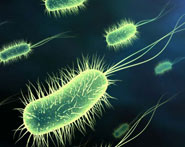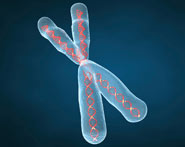


 النبات
النبات
 الحيوان
الحيوان
 الأحياء المجهرية
الأحياء المجهرية
 علم الأمراض
علم الأمراض
 التقانة الإحيائية
التقانة الإحيائية
 التقنية الحيوية المكروبية
التقنية الحيوية المكروبية
 التقنية الحياتية النانوية
التقنية الحياتية النانوية
 علم الأجنة
علم الأجنة
 الأحياء الجزيئي
الأحياء الجزيئي
 علم وظائف الأعضاء
علم وظائف الأعضاء
 الغدد
الغدد
 المضادات الحيوية
المضادات الحيوية|
Read More
Date: 2-12-2020
Date: 2-12-2020
Date: 2-12-2020
|
For array-type microfluidic devices, large numbers of molecules must be collected and placed either in defined microvessels, as with libraries in solution in nanotiter plates, or at defined spots on the surface of a carrier for probe molecules being immobilized on the substrate. This requires the microdispensing of a large variety of (different) fluids in drop volumes down to the picoliter range, with spot sizes and drop distances down to some 10 mm. Special devices to accomplish this task– the “spotters”– have been developed, and a review of spotting methods is provided in Ref. [1].
Dedicated capture spots with optimized wetting characteristics for the dispensed liquid, and non-wetting bars between these spots, may support the array production using spotters.
The main types of spotting methods currently in use include pin-based spotting, ink-jet spotting, photolithographic synthesis, electronic addressing, and stamping.
In pin-based spotting, an array of metal (tungsten) pins picks up a small volume each by dipping into a well plate, and then transfers it when touched down onto the substrate.
Ink-jet spotting uses proven technology from piezoelectric printheads of ink-jet print technology. Large arrays of heads are used for spotting with good control of drop sizes down to the pL range, at high speed.
Photolithographic synthesis is a method developed by Affymetrix [2], where capture probes are synthesized directly on the chip. Photolithography masks the direct, light-sensitive removal of protective groups from hydroxyls in the exposed regions. This allows specific protected nucleotides to attach to these hydroxyls, after which the process is repeated for the next nucleotide.
In the electronic addressing method developed by Nanogen [3], use is made of the fact that the biologic target material is usually either positively or negatively charged. By set ting voltage potentials at the test sites of the array, the target can be attracted and docked at these sites. However, this method requires full semiconductor processing in the manufacture of the array.
Another spotting method currently under development is that of micro contact printing . Elastomeric stamps with posts in the mm size region are used to deliver either the reagent of choice, or a deprotecting agent, to the spots.
References
--------------
1- M. Pirrung, Angew Chem Int Ed, 2002, 41, 1276.
2- M.J. Heller, DNA Microarray Technology: Devices, Systems and Applications, Annu. Rev. Biomed. Eng. 2002, 4, 159.
3- R. Sosnowski, M.J. Heller, E. Tu, A.H. Forster, R. Radtkey, Active microelectronic array system for DNA hybridisation, genotyping and pharmacogenomic applications, Psychiatr. Genet. 2002, 12, 181.



|
|
|
|
منها نحت القوام.. ازدياد إقبال الرجال على عمليات التجميل
|
|
|
|
|
|
|
دراسة: الذكاء الاصطناعي يتفوق على البشر في مراقبة القلب
|
|
|
|
|
|
|
ضيوف الخارج: حفل تخرج (بنات الكفيل) يرسخ معايير وقيم العفة والأخلاق
|
|
|